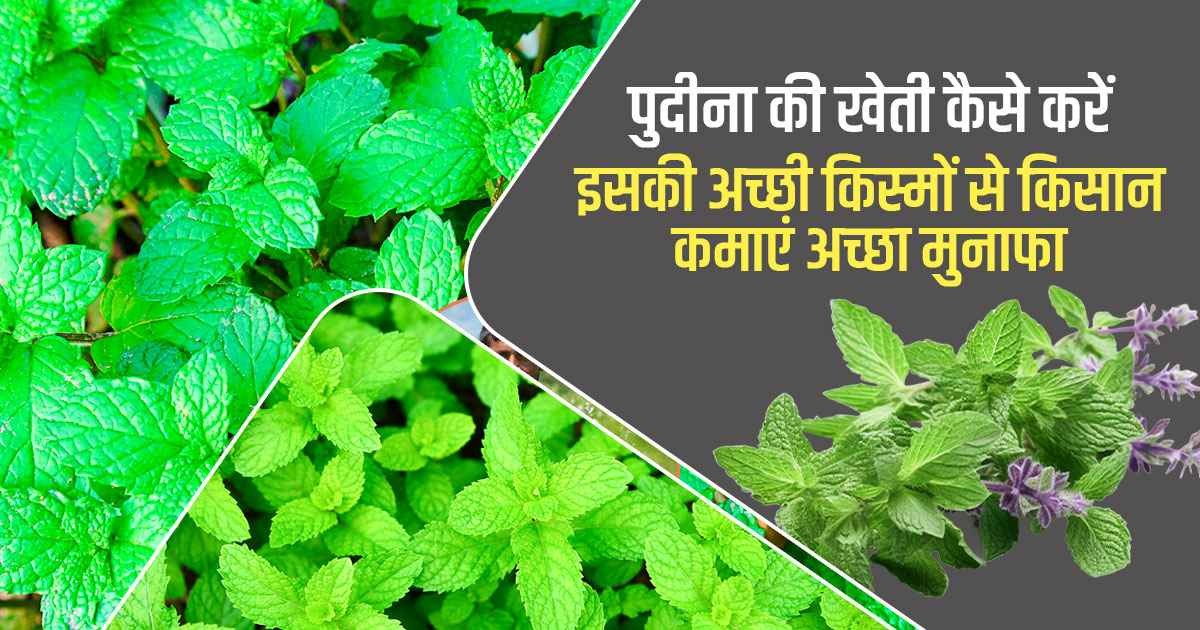
Mint is a vital crop for both the kitchen and garden, thanks to its evergreen aroma and flavor. It enhances the taste of salads, refreshes water, and serves as a home remedy for various ailments. Mint is also beneficial for the garden, attracting helpful insects like honeybees and hoverflies while repelling less useful pests like ants, flies, mosquitoes, and rodents. In the summer, drinking mint syrup can boost health and keep the heat at bay.
Mint can be easily grown using the cutting method. It takes 10-15 days for mint cuttings to develop roots. Simply cut a piece from the mint plant and plant it in a pot or soil.
To grow mint in water, cut a piece from the mint plant, remove the lower leaves, and place the stem in a glass of water. Change the water periodically, and soon roots will start developing from the cuttings. However, the plant cannot stay green and healthy for long in just water as it lacks sufficient nutrients.
Mint thrives in well-drained loamy soil with a pH level of around 6-7. It can be grown in temperate and tropical climates, and with the exception of very cold months, mint can be cultivated year-round.
Best Time for Mint Cultivation: January and February are the best months for planting mint roots. However, some varieties can also be planted in March. The mint crop is ready for harvest 100 to 110 days after planting.
Watering Mint Plants: Maintain moisture in the potting soil without making it overly wet, as too much water can prevent root development and cause the plant to die. Water the plants adequately if the soil is dry about an inch below the surface. If the mint leaves appear wilted, they need water. Water the plants in the morning or evening.
Preparing the Field for Mint: Start with deep plowing using a soil-turning plow, followed by two rounds of harrowing. Before the final plowing, mix 20-25 tons of well-rotted manure per hectare into the soil and level the field. Prepare beds of convenient size for planting mint.
Fertilizing Mint: For mint growth, use organic fertilizers like cow dung manure, vermicompost, rock phosphate, and neem cake. For chemical fertilizers, use 120 kg of nitrogen, 60 kg of phosphorus, and 40 kg of potassium per hectare. Mix one-fifth of the nitrogen into the soil at the time of planting.
Advanced Varieties of Mint: Popular advanced varieties of mint include M.A.S. 1, Kosi, Kushal, Saksham, Gomti (H.Y. 77), Shivalik, Himalaya, Japanese Mint, and Lemon Balm.
Uses of Mint:
Mint leaves can be used to make tea.
Inhaling steam with fresh mint leaves can relieve nasal congestion and headaches.
Mint is used in beverages like lemonade.
It is also used to make mint sauce and mint jelly.
Harvesting and Yield: Mint planted in January and February can be harvested twice, in June and October. The first harvest is done after 100-120 days of growth, and the second harvest occurs about 80-90 days after the first. Fresh herbs contain 0.5 to 0.68% oil at the harvesting stage. Harvest wilted crops on sunny days using a sickle, cutting 10 cm above the ground, as cutting during cloudy or rainy days reduces menthol content in the oil.
Profit from Mint Cultivation: Mint has a high market demand, and farmers can earn good profits from it. Properly cultivated, mint can yield significant earnings, with prices ranging from 100 to 150 rupees per kilogram. Farmers can earn between one lakh to 1.25 lakh rupees per hectare from mint cultivation.